All
This is a fungal disease also know as leaf blight. It typically affects plants in the spring season, due to cool, wet conditions. It can be identified by the dark colored legions found on the undersides of leaves that must then be removed. Dryer, hotter weather can stop the spread of anthracnose.
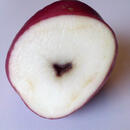
Black heart is a quality problem that affects potatoes when they are deprived of oxygen. High temperatures and excess water in the soil contribute to this condition in the field. Potatoes can also develop this problem in transit or storage if they are exposed to very hot or very cold temperatures.
Bloom drop, or as it’s sometimes called—blossom drop, is when the bloom or flower of a vine crop (cucumbers, melons, gourds, and tomatoes to name a few) drops off, preventing the plant from producing fruit. Once the flower is pollinated, the plant grows a cucumber or tomato (or whatever type of plant it is) in that location. If the bloom falls off, nothing can grow.
The most frequent cause of this problem is inclement growing conditions (extreme hot or cold temperatures, high winds, or torrential rainfall). Commercial growers work on very set schedules, so when freezing temperatures cause the majority of a crop to experience bloom drop, the entire harvest is delayed until new flowers appear and new fruit has time to mature. This often creates a future supply gap and drives up market prices.
For more information about bloom (or blossom) drop, see Purdue and University of Florida.
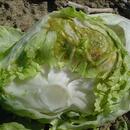
Caused by the fungus Rhizoctonia solani, bottom rot is identified by sunken, reddish-brown spots on the bottom of plants, most notably, lettuces. If the fungus only affects the outer leaves they can be trimmed, but if it has invaded whole heads, they cannot be used. The spots most typically occur when leaves touch soil that contains the fungus and when temperatures are high and air is humid.
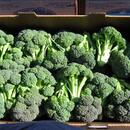
Bracketing is a cosmetic defect caused by inconsistent growth in broccoli plants. It typically occurs when there are large swings in temperatures, resulting in growth being stopped then started rapidly. The biggest problem caused by bracketing is that it prevents crowns from being trimmed to a short- or Asian-cut crown length. If the crown were to be cut, the florets would fall off the stalk.
The Brix scale was named for a 19th century German named A.F.W. Brix. This system is used in the United States to measure the sugar content in fruit, most notably citrus, grapes, and melons.
Cold chain management is the control and maintenance of storage temperatures to prevent product deterioration and bacteria growth, as well as to prolong shelf-life; it is the management of the real-time series of events that occur from seed to fork.
The cold chain combines all of the links between transport and storage
- From harvest point to transportation (refrigerated trucks)
- Transportation to production or shipping facilities
- Production/shipping facilities to distribution warehouses
- Distribution warehouses to foodservice operators' coolers
- Storage inside foodservice operators' coolers until time of plating
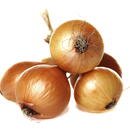
Fresh-run onions exhibit light color and flaky skin; expect typical cured storage-onion characteristics to include globe-like shape, firm texture, dark skin, and single centers.
A double center is a term used when two onions grow from one root. This is typically undesirable in the commercial market, as it makes it more difficult to cut onions into rings or consistent slices.
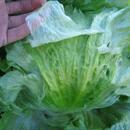
Usually used in reference to lettuces, epidermal peeling is a quality defect caused by freezing temperatures. The outer layer of the leaf peels away, much like chapped lips. It is a purely cosmetic defect and does not affect flavor or quality.
What is it?
Ethylene is an odorless, colorless gas that is produced naturally by fruits and vegetables. It can increase the pace at which fresh produce ripens, shortening shelf-life.
Some of the highest producers of ethylene are apples, avocados (ripe), bananas, cantaloupe, kiwi fruit, pears, and stone fruit.
Almost all fresh produce is at least somewhat sensitive to ethylene gas. In storage, be sure to isolate the high producers from the rest of your fruits and vegetables.

Hollow core is a broccoli quality problem caused by rapid growth, usually when warm weather follows rain. This cosmetic defect occurs when the outer layers of the stalk grow faster than the middle layers, creating a cavity in the center of the stalk.
Hollow heart indicates an open cavity in the center of a potato that turns brown in more severe cases. Its cause is debated: some report it is a physiological disorder caused by not properly rotating fields (planting the same crop in the same lot for multiple growing cycles); others report it is caused by irregular or excessive watering (accelerated by late season rains). Packing sheds use ultrasonic machinery to scan and cull out potatoes with excessive hollow heart. A certain amount of hollow heart is allowed as per USDA Good Delivery Guidelines.
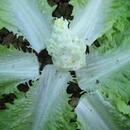
Insect pressure is a term indicating the presence of insects in lettuce fields. The number of insects can vary, depending on location and temperatures. Fall is typically the worst time for insect infestations. Many insect populations start in other fields such as cotton and melons; when these crops mature, they move to alternative harvesting areas like lettuce.
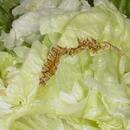
Internal burn is when heat and/or rapid growth causes browning on lettuce's inner leaves; tip burn is the same condition occurring on the outer tips of leaves. Both problems decrease shelf-life and can lead to breakdown within the lettuce head. They are most prevalent in summer months, when temperatures are extremely high. Both conditions are usually caused when there is rapid growth and plants cannot get sufficient quantities of water to various sections of the head.
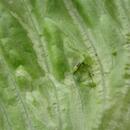
Leaf miner problems include the larvae of moths, flies, and beetles that feed on leaves, hence they 'mine' the plant. Evidence of this problem includes spots, discoloration, and pitting. In lettuces, the leaf miner typically feeds on the lower leaves that can be trimmed.
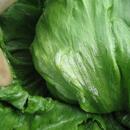
After periods of rain or high humidity, mildew and mold can develop on certain produce items. Products that possess either of these problems are never packed, thus reducing overall supply levels. In some commodities (such as berries and citrus), mold can grow in transit; products should be disposed of immediately upon arrival to prevent cross-contamination.
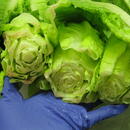
Premature pinking is the appearance of pink or light red areas at the site where fruits and vegetables are cut and signals shortened shelf-life. It is caused by respiration, water loss, and ethylene production.
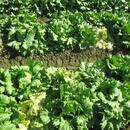
Caused by a type of soil-borne fungus, Sclerotinia prefers moist, humid conditions. The disease mainly affects mature lettuces, as well as other leafy greens, beans, cucumbers, citrus, melons, potatoes, and tomatoes. Symptoms include water-soaked spots on leaves that can become slimy or dry lesions on the stalk, stems, and branches that turn yellow, then brown.
Shatter is a term used to explain what happens when individual grapes become disconnected from the vine, usually through rough handling during harvesting, packaging, transportation, or receiving.
Limes can be affected by stylar end rot when left on the tree too long or in poor weather conditions. It occurs at the end of the individual fruit, usually while on the tree, although much of yellow or brown rot occurs while in storage. The stylar end of the fruit becomes cracked, discolored, and decayed.
"The sweat" is the common term used to describe the natural process of allowing potatoes to shed excess moisture after being harvested. This process takes up to three weeks to complete once potatoes are in dry storage. After the sweat is finished, potato skins will have a smooth, net-like appearance that reflects the typical Russet variety.
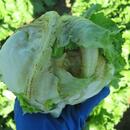
Tomato spotted wilt virus, or TSWV is spread through nine different varieties of tiny winged insects called thrips. The disease affects tomatoes, but also celery, eggplants, peppers, lettuces, and pineapples, among others. Symptoms include bronze leaves, dark spotting, drooping leaves, stunted growth, and reduced yields. If a plant is affected early in the season, it will not produce fruit.
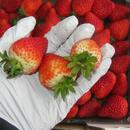
White shoulders are caused by uneven ripening and are most evident on strawberries that have been grown during fluctuating weather patterns. Certain enzymes critical to pigmentation within berries are inhibited by extreme heat.
